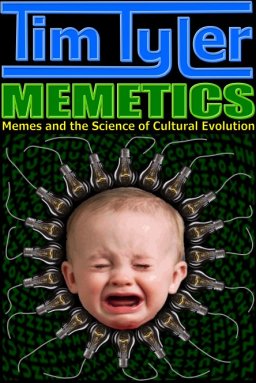 |
Most of what is unusual about man can be summed up in one word: `culture'.
The human nose is an unusual feature of humans. Most apes have flat noses. Does culture explain the human nose? If so, how?
Several hypotheses come to mind. One proposes that big noses come with pronounced brow ridges which act to defend the eyes against being punched in the face - something which humans are much better at than our cousins. Gene-meme coevolution comes in here since accurate punching is tied in with rock throwing skill - which is a culturally-transmitted hunting technique.
Another hypothesis is that the nose acts as an air lock. The nostrils point down, preventing water from entering the nose during common swimming techniques. Swimming is a culturally-transmitted trait. Humans are much more water-friendly than other apes. Water is potentially a strong source of selection, since water entering the lungs can be fatal. Elaine Morgan is probably the best known proponent of this idea. She covers it in her book The Scars of Evolution, for example.
 Another hypothesis is sexual selection. Whenever some part of the body grows to an unusual size, sexual selection ought to be on the table as a possible explanation. The nose of the proboscis monkey illustrates this possibility.
Another hypothesis is sexual selection. Whenever some part of the body grows to an unusual size, sexual selection ought to be on the table as a possible explanation. The nose of the proboscis monkey illustrates this possibility.
Lastly, northerners tend to have bigger noses than equatorial folk - suggesting that the nose acts as a heat exchange and represents one of many adaptations to living in a cold climate - somethings humans can do largely due to cultural transmission.
I tend to favor the 'airlock' hypothesis. The heat-exchange hypothesis predicts that most Africans should have chimp-like flat noses - which they evidently do not. The idea of a defensive barrier would suggest that males would have bigger noses than women. Similarly, sexual selection typically affects traits differently in the different sexes. There is some nasal sexual dimorphism - but probably not enough for these theories.
I propose here that the 'airlock' hypothesis be promoted as the cultural nose hypothesis.
 Much has been written about how cultural evolution is faster than organic evolution. Unfortunately most of it is nonsense. The problem is that people compare the rate of evolution of humans with the rate of evolution of memes - which typically have a much shorter generation time. This comparison is unfair and unhelpful - as I've previously documented my previous article:
Much has been written about how cultural evolution is faster than organic evolution. Unfortunately most of it is nonsense. The problem is that people compare the rate of evolution of humans with the rate of evolution of memes - which typically have a much shorter generation time. This comparison is unfair and unhelpful - as I've previously documented my previous article:  Humans have domesticated many memes - making them less harmful and more docile and friendly servants via selective breeding. In modern times, this idea is often called
Humans have domesticated many memes - making them less harmful and more docile and friendly servants via selective breeding. In modern times, this idea is often called  One of the basic ideas of gene-meme coevolution is
One of the basic ideas of gene-meme coevolution is 








